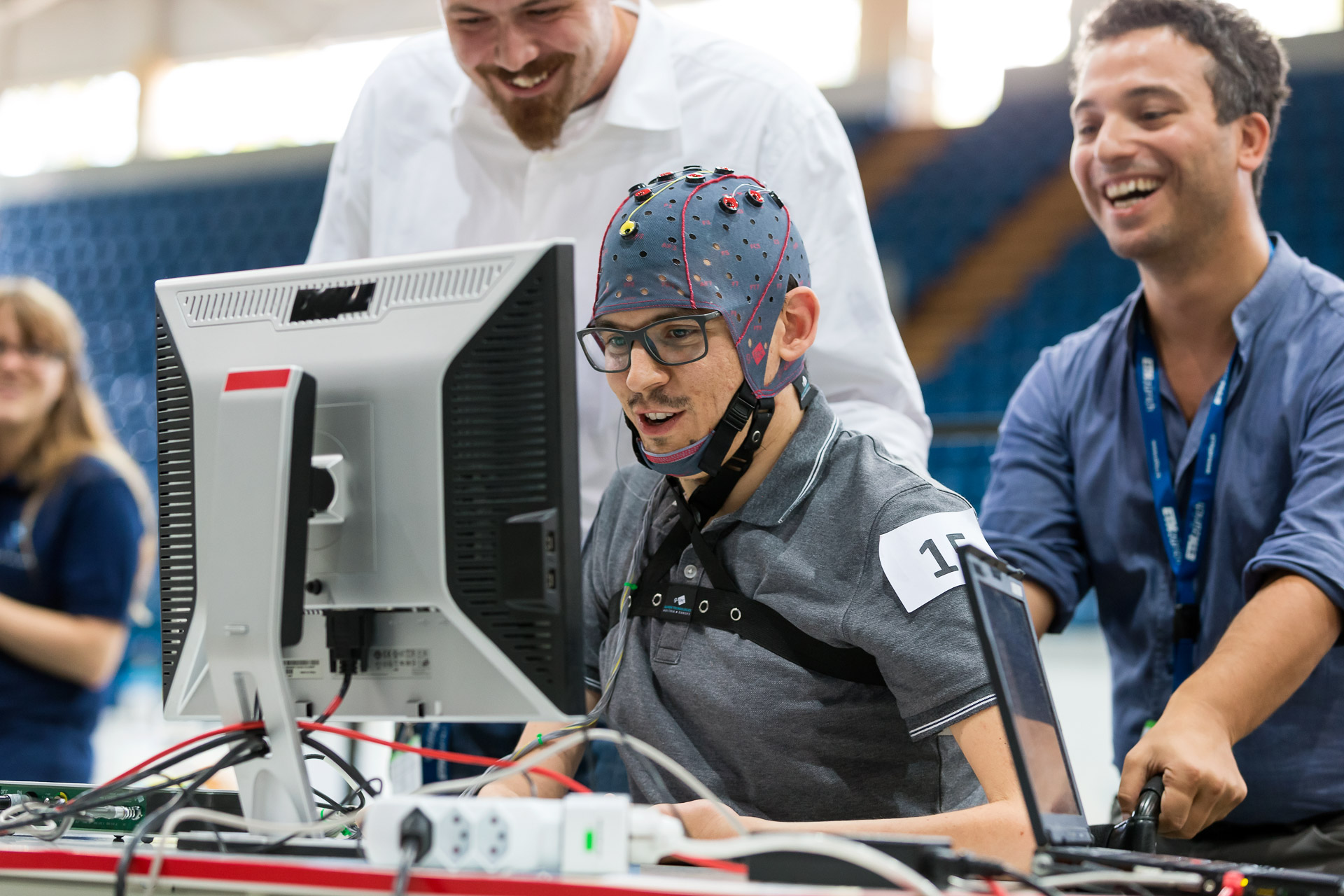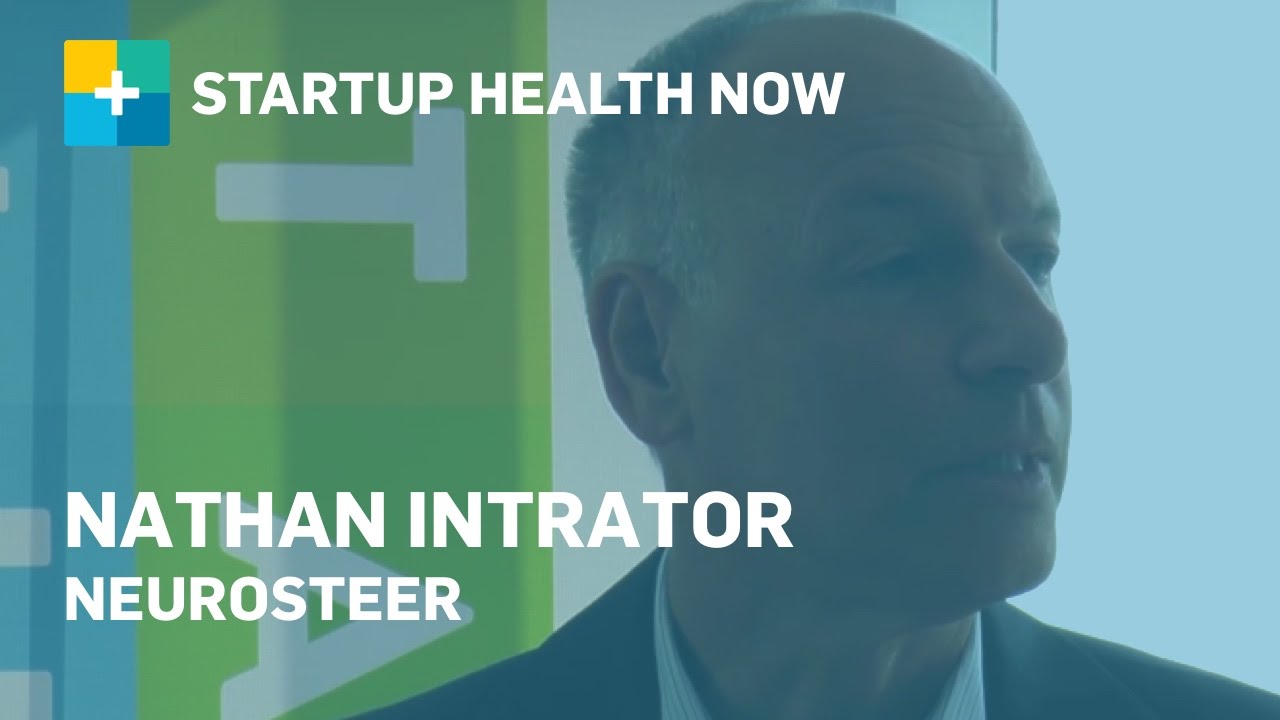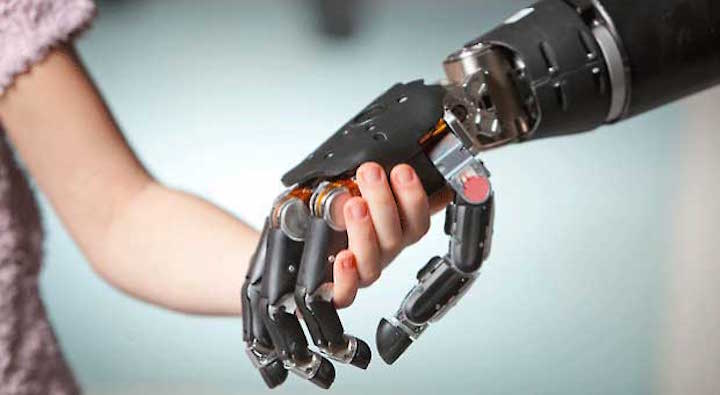Category: BCI
-

BCI for astronaut equipment control, ground communication
The China Astronaut Research and Training Center and Tianjin University are developing a BCI system to allow astronauts to control spacecraft equipment with their thoughts. Brain impulses will be translated into words, to operate instruments and communicate with ground control. The system will be tested by astronauts in space, and information is currently displayed at the International Simulation…
-

“Cybathlon” features robotic exoskeleton, BCI competitions
ETH professor Robert Riener‘s first Cybathlon will feature competitions using robotic prostheses and brain computer interfaces. Disabled participants will compete in brain controlled races and exoskeleton controlled tasks. Many will include common obstacles, like doors, ramps, and stairs, as the goal is to develop technology to increase independence and make the activities of daily living…
-

Monkeys type Shakespeare with thoughts; human trials underway
Stanford professor Krishna Shenoy has developed technology that reads brain signals in monkeys, from implanted electrodes, to control a cursor moving over a keyboard. A clinical trial will begin soon, with the goal of creating brain computer interfaces to help paralyzed people communicate. This could overcome the limitations of eye-controlled keyboards, which do not…
-

Robotic hand exoskeleton for stroke patients
ETH professor Roger Gassert has developed a robotic exoskeleton that allows stroke patients to perform daily activities by supporting motor and somatosensory functions. His vision is that “instead of performing exercises in an abstract situation at the clinic, patients will be able to integrate them into their daily life at home, supported by a robot.”…
-

Mobile brain health management
After scanning the brains of ALS, epilepsy, minimally conscious, schizophrenia, memory impaired, and healthy patients, to monitor brain health and treatment effectiveness, Brown and Tel Aviv University professor Nathan Intrator has commercialized his algorithms and launched Neurosteer. At ApplySci’s recent NeuroTech NYC conference, Professor Intrator discussed dramatic advances in BCI, monitoring, and neurofeedback, in his…
-

BCI + VR helps paraplegics regain sensation, muscle control
Duke professor Miguel Nicolelis has used BCI and VR to help 8 paralyzed people regain partial sensation and muscle control in their lower limbs. Five study participants had been paralyzed for more than five years. Two had been paralyzed for more than ten. The patients used their own brain activity to simulate full control of their…
-

Thought controlled prosthetic arm has human-like movement, strength
This week at the Pentagon, Johnny Matheny unveiled his DARPA developed prosthetic arm. The mind-controlled prosthesis has the same size, weight, shape and grip strength of a human arm, and, according to Matheny, can do anything one can do. It is, by all accounts, the most advanced prosthetic limb created to date. The 100 sensor arm…
-

Implanted chip enables quadriplegic to move arm with thoughts
Battelle’s NeuroLife system has allowed a quadriplegic man to to make complex movements with his hand and fingers, using signals from his brain. The breakthrough invasive device uses an artificial neural bypass that reroutes signals from the brain to the affected muscles. A tiny, 96 channel microelectrode array was implanted in the patient’s motor cortex. A cable port was…
-

Bionic finger, implanted electrodes, enable amputee to “feel” texture
Swiss Federal Institute of Technology and Scuola Superiore Sant’Anna researchers have developed a bionic fingertip that allows amputees to feel textures and differentiate between rough and smooth surfaces. Electrodes were surgically implanted into the upper arm of a man whose arm had been amputated below the elbow. A machine moved an artificial finger, wired with electrodes, across…
-

BCI controlled wheelchair
Miguel Nicolelis has developed a brain computer interface that allows monkeys to steer a robotic wheelchair with their thoughts. The study is meant to demonstrate the potential of humans to do the same. Signals from hundreds of neurons simultaneously recorded in two brain regions were translated into the real-time operation of a wheelchair. Nicolelis said: “In…
-

Mind controlled prosthetic fingers
Johns Hopkins researchers have developed a proof-of-concept for a prosthetic arm with fingers that, for the first time, can be controlled with a wearer’s thoughts. The technology was tested on an epileptic patient who was not missing any limbs. The researchers used brain mapping technology to bypass control of his arms and hands. (The patient was…
-

Brain state learning system adapts to user focus
BACh (Brain Automated Chorales) estimates brain workload using fNIRS to measure oxygen in the prefrontal cortex to help beginners learn to play Bach chorales. The system offers new lessons when the brain isn’t overloaded with information. Tufts Beste Yuksel and Robert Jacob, who developed the technology, believe that it can help with any type of learning, and specify math,…